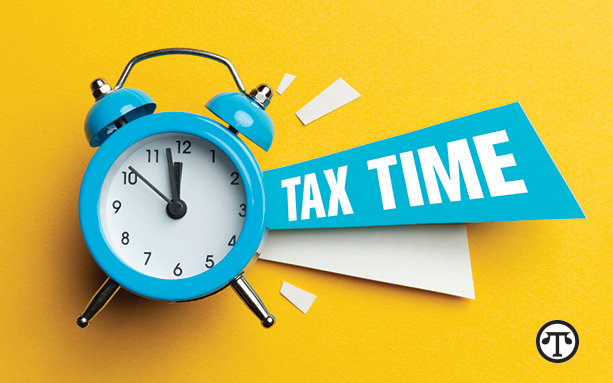An IRS Incentive To Save For Retirement

(NAPSI)—Saving for retirement can be challenging when juggling competing financial priorities, such as building short-term savings, paying off debt, and just covering basic living expenses. The good news is that the Saver’s Credit—a little-known tax credit made available by the IRS to eligible taxpayers—could reduce your federal income taxes when you save for retirement through a qualified retirement plan, such as a 401(k) plan or an Individual Retirement Account (IRA).
The 19th Annual Transamerica Retirement Survey found that fewer
than four in 10 U.S. workers (38 percent) are aware that the Saver’s
Credit exists. “On top of the tax-advantaged treatment of saving for
retirement in a 401(k), 403(b) or IRA, the Saver’s Credit is an
additional benefit that may reduce a worker’s federal taxes,” says
Catherine Collinson, president of nonprofit Transamerica Center for
Retirement Studies®. “Many eligible retirement savers could be confusing
these two incentives, simply because the idea of a double tax benefit
sounds too good to be true.”
What Is the Saver’s Credit?
It is a
non-refundable tax credit for contributions an eligible taxpayer makes
to a 401(k), 403(b) or similar employer-sponsored retirement plan, a
traditional or Roth IRA, or an ABLE account. The maximum credit is
$1,000 for single filers or individuals and $2,000 for married couples
filing jointly.
Tips for claiming the Saver’s Credit:
1. Check Your Eligibility
To
be eligible, the maximum Adjusted Gross Income (AGI) for single filers
is $32,000 in 2019 and $32,500 in 2020. For the head of a household, the
AGI maximum is $48,000 in 2019 and $48,750 in 2020. For those who are
married and file a joint return, the AGI maximum is $64,000 in 2019 and
$65,000 in 2020.
You must be 18 years or older by January 1 and cannot be a
full-time student or be claimed as a dependent on another person’s tax
return.
2. Save for Retirement
To claim the
Saver’s Credit for 2019, you must have contributed to a 401(k) or 403(b)
or similar employer-sponsored retirement plan, a traditional or Roth
IRA, or an ABLE account.
Save for retirement in your employer’s retirement plan, if
offered, or in an IRA. In general, for every dollar you contribute to a
qualified retirement plan or IRA (up to the lesser of the limits
permitted by an employer-sponsored plan or the IRS), you defer that
amount from your current overall taxable income on your federal tax
return—and you may also qualify for the Saver’s Credit. After-tax
contributions, such as those made to a Roth IRA or Roth 401(k), are also
eligible for the credit, but rollover contributions are not eligible.
You have until April 15, 2020 to make a contribution to an IRA for tax year 2019.
3. File Your Tax Return and Claim the Saver’s Credit
When
you prepare your federal tax returns, you can claim the Saver’s Credit
by subtracting this tax credit from your total federal income taxes.
Workers who are eligible to claim the Saver’s Credit are also
eligible to take advantage of the IRS Free File program for taxpayers
with an AGI of $69,000 or less. Ten commercial software companies make
their tax preparation software available through the Free File program
at www.irs.gov/FreeFile.
• If you are using tax preparation software to prepare your
tax return, including those programs offered through the IRS Free File
program, use Form 1040, Form 1040-SR, or Form 1040-NR. If your software
has an interview process, be sure to answer questions about the Saver’s
Credit, also referred to as the Retirement Savings Contributions Credit,
or Credit for Qualified Retirement Savings Contributions.
• If you are preparing your tax return manually, complete Form
8880, Credit for Qualified Retirement Savings Contributions, to
determine your exact credit rate and amount. Then transfer the amount to
the designated line on Schedule 3 (used with Forms 1040 and 1040-SR) or
Form 1040-NR.
• If you are using a professional tax preparer, be sure to ask about the Saver’s Credit.
• If you receive a refund, consider directly depositing it into an IRA to boost your retirement savings further.
Don’t overlook this important tax credit; it may help reduce what
you owe in federal taxes or increase your refund. Help spread the word
about the Saver’s Credit by telling family, friends, and colleagues. It
may meaningfully impact an individual’s long-term savings, and even
inspire non-savers to start saving for retirement.
For more details and resources on the Saver’s Credit in English
and Spanish, visit Transamerica Center for Retirement Studies® at www.transamericacenter.org/SaversCredit.
Transamerica Center for Retirement Studies® (TCRS) is a division of Transamerica Institute®, a nonprofit, private foundation.

“The #SaversCredit can reduce your federal #incometax when you save for #retirement through an eligible plan. #IRS #401(k) #IRA #403(b)http://bit.ly/3azCB17”
